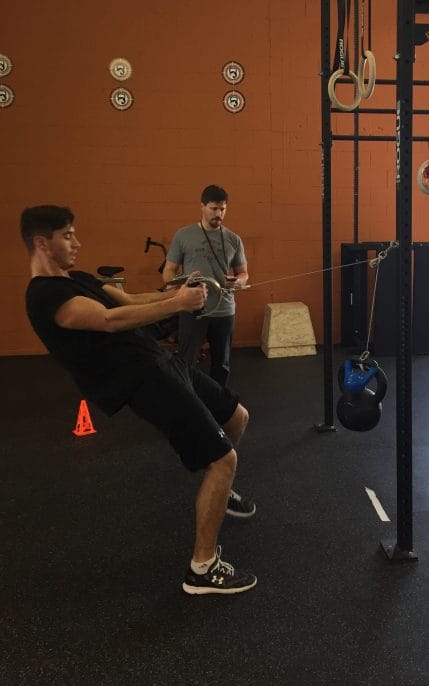How Do You Pre-PARE For the PARE?- Part 1 of 3
Most responder vocations require passing some form of performance or physical aptitude test. These tests are also used to test for fitness in a work-related capacity. A candidate in good physical shape should expect to perform well, and a candidate that is lacking fitness will have weaknesses exposed. Preparation is key in being successful, while waiting until the last possible moment to start preparing only makes a successful testing unlikely. If a candidate is seriously considering a first responder career then it is best to start with as much time as possible in order to build the necessary athletic assets to not only pass but to be competitive! The PARE test will be referred to specifically, though the principles can be applied to most other responder industry tests such as the POPAT, CPAT, or York Test, etc.
The first step in getting ready for the PARE is determine how much time until the actual test. If it is 4 weeks or less and you haven’t started any training then there is a limit to how much you can improve.
Part One of this PrePARE series is addressing the less than ideal situation: the last minute candidate.
Your best approach here is 1) to practice the specific events of the test as best you can and incorporate them into some type of intervals so that you can learn to perform them in a fatigued state and 2) perform some simple, high intensity intervals that match the time requirements of the test in order to develop enough stamina. This means finding some stairs, a 3’ high hurdle to vault and some lower hurdles, and a sandbag. Make sure to watch demonstrations so you can approximate the arrangement. You may need to find a park in which to practice. Running through the sequence and adding burpees and sit-ups along with some 10-15M shuttle runs will make the various movements more familiar. Most tests range between 4 and 10 minutes so using a treadmill, Airdyne bike, or rowing machine for a series of higher intensity work:rest intervals (as 20 seconds work:10 seconds rest) starting at 5 minutes and adding 1 minute every week.
It is more difficult to simulate the push/pull station. If you can get access to or purchase a thick exercise band you can wrap it around a sturdy post and practice both pushing and pulling against the post as resistance while doing the 180 degree pivots. We use pulleys and kettlebells attached to a handle. If you are performing a firefighter test it will be a good idea to acquire a weighted vest and some heavier dumbbells or kettlebells to simulate the gear and tools.
It is likely that if you pass the test you will need to do some longer distance runs because these are frequently encountered during the subsequent training. Without debating the value of longer “cardio” type distances, if you have left the Pre-PARE preparation to a last thought and if you are not already at a high level of fitness then your priority is to prepare yourself for a high demand event that will not see you jogging for 3 miles. Training the interval work will help develop some cardio anyway while still preparing you for the test.
If you can find a way to actually practice the PARE obstacle course you will find that familiarity will go a long way to help you stay calm and pace yourself appropriately which will only help you perform at your best. We are able to simulate a PARE test at Stone Brook Strength quite close to the actual test, almost as good as the real thing.
Part 2 will look at training for the candidate that has more time to prepare.
The author has 9 years experience as a volunteer firefighter and 13 years as a career firefighter, having competed in numerous recruitment competitions himself and maintained a high level of job-related fitness. In addition, he has prepared other candidates for various recruitments and subsequent fitness for duty. Contact [email protected] for a FREE No Sweat Intro if you need help preparing for a recruitment competition.

